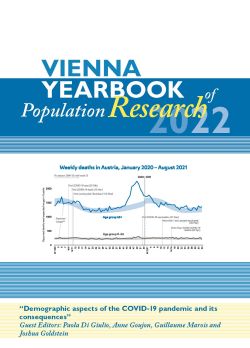
Vienna Yearbook of Population Research 2022, pp. 85-106, 2021/08/03
Demographic aspects of the COVID-19 pandemic and its consequences

Evidence from research on infectious diseases suggests that income inequality is related to higher rates of infection and death in disadvantaged population groups. Our objective is to examine whether there was an association between income inequality and the numbers of cases and deaths during the first wave of the COVID- 19 pandemic in European countries. We determined the duration of the first wave by first smoothing the number of daily cases, and then using a LOESS regression to fit the smoothed trend. Next, we estimated quasi-Poisson regressions. Results from the bivariate models suggest there was a moderate positive association between the Gini index values and the cumulated number of infections and deaths during the first wave, although the statistical significance of this association disappeared when controls were included. Results from multivariate models suggest that higher numbers of infections and deaths from COVID-19 were associated with countries having more essential workers, larger elderly populations and lower health care capacities.
Keywords: COVID-19; income inequality; first wave; European countries